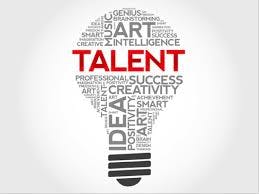In 1997 Steven Hankin of McKinsey & Company coined the term ‘War of Talent’. The “War for Talent” was discussed by Elizabeth G. Chambers, Mark Foulon, Helen Handfield-Jones, Steven M. Hankin and Edward G. Michaels III in “The McKinsey Quarterly” (Vol. 1) in 1998 where they highlighted an expected talent shortage on the labor market. The ‘War for Talent’ refers to how competitive the job market has intensified for recruiting and retaining talented employees. Thirty years later the War for Talent is not just challenging, it is stiff and complex. It is intensified by demographic shifts characterized by increasing demand along with decreasing supply. The war for talent is never-ending as organizations are always seeking to attract and retain the best talent. For any organization finding and retaining top talent is one of the greatest challenges they experience. Companies end up just hiring the best candidate who applied for the job and not necessarily the best candidate for the company. There are a lot of qualified candidates in the job market however when given the opportunity they present a skills gap and talent shortage to execute their role. A McKinsey Quarterly article stated that by 2020, in more advanced countries, as many as 95 million workers could lack the skills needed for employment. The most recent ManpowerGroup Talent Shortage Survey found that 38% of employers are having difficulty filling jobs.
It’s been said that people are your greatest assets but only if they are the right people. When you continually assess and improve your hiring process, you will attract the best talent who can help you achieve your company’s goals. Acquiring top talent presents its own challenges in that talented individuals don’t want to discuss a job until you determine what’s most important to them. Secondly, they want to know exactly how you can help advance their career, or they won’t show any interest. Thirdly, talented candidates want to know potential career path opportunities. In addition, organisations must be willing to talk to candidates after working hours, and lastly, you must use all means of communication. Requisitions should be performance-based rather than skills-based, and your website should be used strategically to highlight videos that show exactly what it’s like to work for your company. Testimonials and recommendations should be available on the organizational website and social media profiles are critical because candidates spend as much as 6 to 7 hours researching companies before they apply for an opportunity.
In spite of all the technological advancements of the 21st Century organisations still face hurdles in acquiring the best talent for their organisations which is mainly due to changing demographics, employee experience, and business turbulence. According to a recent report, the face of the workforce will change dramatically over the next decade in terms of numbers and ages profiles. By 2020, millennials are expected to comprise 50% of the workforce and 75% by 2025. Employee experience is of much importance as organizations are now taking these pursuits more seriously as they try to truly create environments where people want to show up to work. It should come as no surprise that industrial organizational psychology is one of the fastest-growing professions. These scientists are influencing how we hire and recruit people, design our office spaces, lead and manage, and even build and run our HR departments. Lastly, Almost 90% of the Fortune 500 have disappeared since the original list was created in 1955 as the world appears to be getting smaller, change is happening faster, competition can come from anywhere. In this environment, organizations are struggling to hire the best talent that will help them see potential threats and uncover new opportunities. By focusing on employee experience, many companies are hoping to reverse that trend.
However, the competition is tough and attracting those talents is not an easy task it is still possible to acquire the best talent for any organization by incorporating a number of strategies. Firstly, organisations need to dedicate more effort to employee engagement. Employee engagement is crucial as various studies have proved that engaged employees are more productive, have fewer absence days and generate higher profits. To dedicate more efforts to employee engagement can be worthwhile to promote a culture of engagement. It is also necessary to give employees flexibility this is because providing employees the flexibility of working from anywhere, and when they want can give the new generations the feeling of freedom that they constantly are on outlook for and also help to manage the work-life balance for families with children. Lastly, to win the war on talent there is a need to focus on work-life balance and employee well-being. There is no doubt that in order for employers to attract and retain top talent, while decreasing the level of employee disengagement, offering the right mix for corporate wellness initiatives is critical.
Evelyn Gumiso Nyahando is a Consultant at Industrial Psychology Consultants (Pvt) Ltd a management and human resources consulting firm. Phone +263 4 481946-48/481950/2900276/2900966 or email: gumiso@ipcconsultants.com or visit our website at www.ipcconsultants.com
